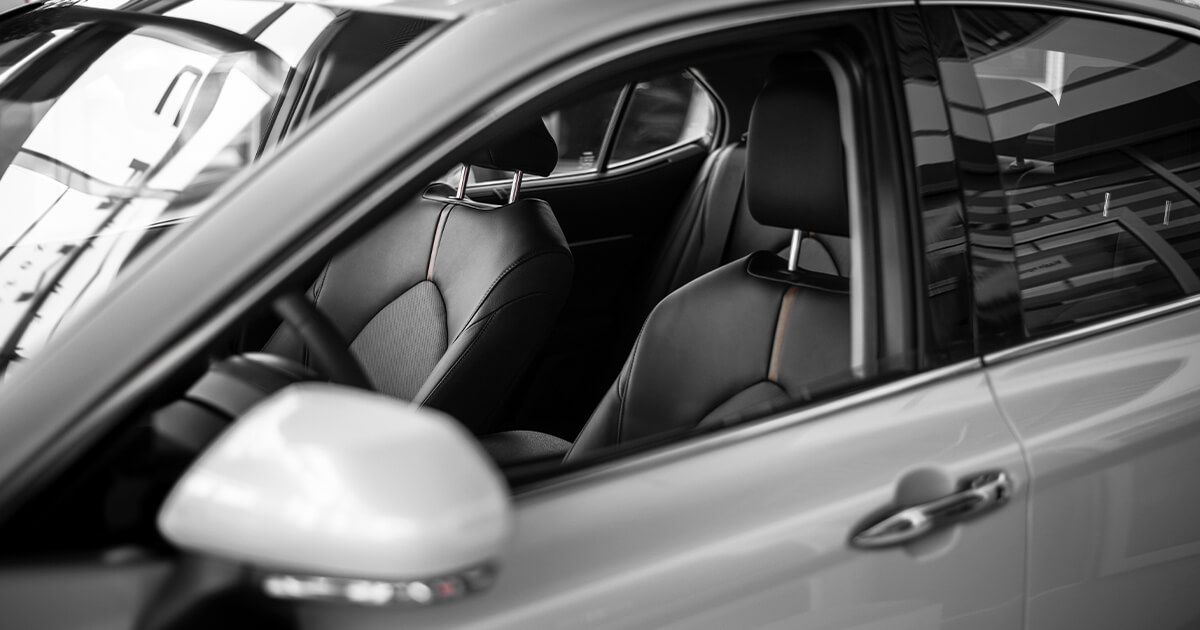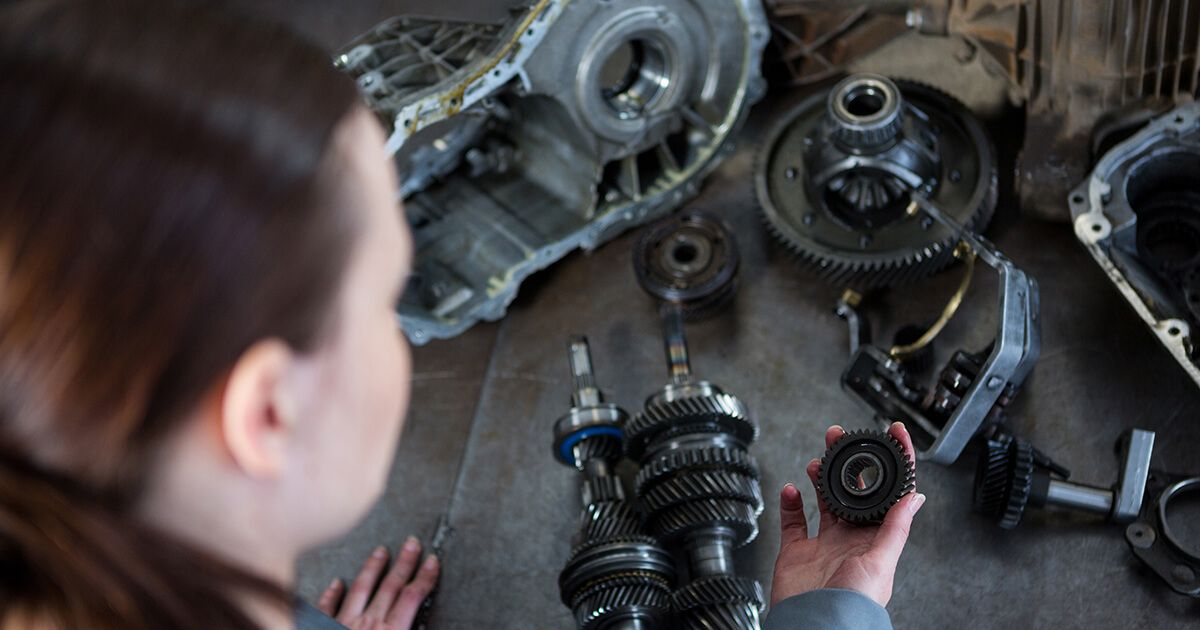
We collect basic website visitor information on this website and store it in cookies. We also utilize Google Analytics to track page view information to assist us in improving our website.

Competition is rampant in automotive manufacturing unless you’re one of Canada's four heavyweights in the sector. Even the massive players must do everything possible to stay ahead of the game, as there’s a constant struggle for supremacy.
You’ve always got to be looking for a competitive edge in the automotive world.
Sometimes, marketing, sales, or other abstract business growth strategies make the difference. Most of the time, however, lasting success comes down to the nitty-gritty of assembly processes.
In other words, are your manufacturing approaches, techniques, and technologies more efficient than your competition?
Laser cutting is a prominent example of technology giving automotive manufacturing businesses a competitive edge. It’s revolutionized the sector due to its vast benefits, leading to its widespread implementation.
In this post, we’ll break down the applications and benefits of laser cutting in the auto manufacturing sector.
Aside from having numerous flexible applications (e.g., fabricating metal components, cutting plastic parts, and branding-related engraving/marking), laser cutting can integrate with robotic systems. The streamlined results have yielded a more cost-effective and functionally efficient sector.
As your “total source” service for producing high-quality steel products, we apply the most suitable techniques to each project. We invest in cutting-edge technology and equipment to ensure there’s always a solution for our clients, whether straightforward or alternative, helping them achieve all specifications and tolerances.
Contact us today if you’re mulling over a project in your mind or wish to learn more about steel cutting.
CO₂ and fibre lasers are the two most regularly featured in the automotive manufacturing industry, offering the desired balance of accuracy, speed, and budget-friendliness.
Typically, CO₂ lasers cut non-metallic materials (i.e., plastic, fabrics, and rubber). Their versatility lends itself to the precise cutting of intricate patterns and shapes. These lasers fit seamlessly into high-volume production scenarios because they’re efficient, fast, and accurate. They’re also low maintenance, speaking further to their ability to streamline production.
The material being cut, precision/accuracy-based needs, and production volume all impact your choice of laser cutter. Consistency, reliability, and speed are all necessary to meet the demands of this fast-moving, competitive sector.
Here’s a list of car parts that often undergo laser cutting during manufacturing:
Doors.
Dashboards.
Bumpers.
Interior panels.
Car seats.
Engine components.
Below, we’ll delve further into laser cutting’s role in automotive manufacturing and how it streamlines the processes throughout the industry.
Laser cutting is implemented to cut the following plastic parts:
Interior panels and dashboards.
License plates.
Bumpers.
Pillars.
Light housings.
Trims.
Spoilers.
Etc.
Automotive components are constructed with a diverse array of plastics, such as acrylic, HDPE, ABS, polycarbonate, TPO, and polypropylene.
Whether plain or painted, plastics can be integrated with carbon/glass-fibre-reinforced support systems, fabric-covered interior pillars, and other such materials.
The injection moulding process yields extra plastic residue, which laser cutting can trim. Furthermore, lasers can drill or cut holes for parking sensor lights, switches, fixing points, and other components.
Textiles like upholstery fabrics are a frequent fixture of a car’s interior. The fabric type and thickness will dictate the processing speed for manufacturing these materials.
Precision cuts are used for most synthetic textiles, and the edges are sealed, offsetting any fraying when seats are assembled and stitched.
Accurate Airbag and Seatbelt Sealing and Cutting
Conventional cutting methods are prone to wear and tear when used for airbag sealing.
Conversely, laser cutting seals airbags while reducing the likelihood of wear.
Before being stitched together, flat-woven airbag materials are shaped with a laser cutter. They’re also silicone-coated for optimal permeability.
A laser cutter is also best suited to one-piece-woven (OPW) airbags because they require trimming.
In these scenarios, there’s no contact and fabric handling is limited, preventing damage that could hamper the structural integrity of an airbag.
Metal parts such as hoods, body panels, doors, and fenders often undergo laser cutting. As are gears, shafts, bearings, and other engine components.

Laser cutting is also used when manufacturing suspension components and exhaust systems.
The automotive industry's ongoing shift towards lighter, stronger materials for better fuel efficiency and performance has made laser cutting even more critical. Materials such as high-strength steel, aluminum alloys, and composites require the precise and delicate handling that laser cutting offers.
This technology is particularly adept at cutting complex shapes and small, precise features in these advanced materials, which are often challenging to process using traditional methods.
Laser cutting minimizes the risk of material deformation or damage, often a concern with conventional cutting methods, particularly when working with delicate or thin metals. The contactless nature of laser cutting means there's less mechanical stress on the material, resulting in cleaner edges and a higher-quality finish.
With that said, laser cutting is not always the best way to cut metal automotive parts:
When it comes to thick metal sheets, plasma cutting is more effective and faster. This is the case for certain structural components of a vehicle’s frame, suspension, and exhaust system.
For very thick steel plates, like heavy-duty chassis components for commercial vehicles, construction equipment, or heavy trucks, flame cutting is the way to go.
Commonly, leather (synthetic or authentic) is cut with lasers because of how fine-tuned the process and machinery are.
This section will focus on the benefits of laser cutting in automotive manufacturing.
The computer numerical controls (CNC) in laser cutters enable them to cut precisely preprogrammed outlines.
Automotive manufacturing companies continually rely on laser cutting as its features (like CNC) streamline production with consistent, never-changing parts, reducing the time needed to complete work.
Glass, rubber, fabrics, and plastics all have their place in automotive manufacturing and can all be cut with lasers.
Laser-cut components and materials exist in almost every car’s exterior and interior. More to the point, laser cutting is implemented throughout automotive manufacturing, from earlier designs to development and assembly.
Using a high-density heat source, laser cutters produce clean and precise results.
Also, laser cutters produce a light wave with a wavelength of 10,000 nm. The metal’s partial energy absorption makes precision cutting a reality since it yields a molecular structure change in the metal.
Beam quality is assessed with the beam parameter product (BPP). For example, CO₂ lasers have an 8-9mm BPP. This combines with intensely concentrated heat, yielding near flawless cuts, explaining the widespread usage throughout automotive manufacturing.
Often, laser cutters find themselves a crucial component of airbag sealing and cutting, producing error-free results, which is why they’re sought-after throughout the sector.
Here, we’ll introduce the concept of output-to-space efficiency and how optimizing it benefits automotive manufacturers.
Compared to its throughput, laser cutters are compact, even relatively small. Thus, they can be seamlessly integrated into a manufacturing setting, not taking up much space. As such, they’ll fit into smaller shops as much as larger spaces, maintaining the utmost precision and highest quality.
Every stage of automotive manufacturing—from the design phase until assembly—benefits from laser cutters due to such machines' accuracy, speed, and precision.
Integration capabilities with robot systems (because of the 3D nature of some items) make lasers even more of a streamlining tool.
Some robots can pick up parts, offer them to a processing head, and maneuver them to complete the cut.
A laser can also be installed on a robot arm, enabling the beam to move around a part’s 3D contours.
Wide ranges of processes can be implemented when the above techniques are combined. Workpieces and laser heads are managed and streamlined to execute cutting operations optimally.
Several laser processes can be completed within one robot cell, improving production and cycle times. Processing quality, repeatability, and dependability are all enhanced, lowering rejection rates and reducing expensive material waste. Thus, laser cutters serve large-batch and small-scale productions alike.
Are you an automotive parts manufacturer seeking speed, precision, accuracy, dependability, and adaptability?
Laser cutting can make all the difference in the world to your enterprise. It’s already an integral component of automotive manufacturing because of the streamlining qualities discussed above.
Regardless of the components that laser cutting can help manufacture, it’ll generate top-tier results and products on which your company can rest their reputation.
This versatile form of steel-cutting fits into almost all manufacturing environments, including small shops. Yet, it entirely fits into larger-scale settings. It’s compact, seamless, and can integrate with robotic systems to further streamline production.
Amber Steel specializes in plasma, flame, and laser cutting, offering your enterprise a “total source” solution to produce top-tier steel products, including automotive manufacturing parts. We’re committed to investing in cutting-edge technology and equipment to ensure our clients have alternatives to achieve bespoke specifications and tolerances.
Learn more about steel cutting by contacting us today. Or, reach out with an email or phone call if you have a project in mind and wish to discuss it with industry experts.